Tradition
The configuration of a shotgun traditionally used for hunting in Finland is a wood stocked double barreled or a semi-automatic with 26″ (660,4 mm) to 30″ (762 mm) barrel(s).
How did we end up with this kind of configuration? The barrel length must be dictated by the excellent wing shooting characteristics. After all the long barreled guns are used even in the sporting clays events at the olympics. The longer barrel must be advantageous for maximizing the ballistic properties of the projectile(s).
The wood stocks are probably dictated mostly by aesthetics, since no one can’t deny that a hand made wood stock is a breathtaking feat of artisanship. There is also a practical advantage to wood as a material. It’s warm to the touch in a cold climate.
It’s also about traditions and beliefs that have been passed on for generations.
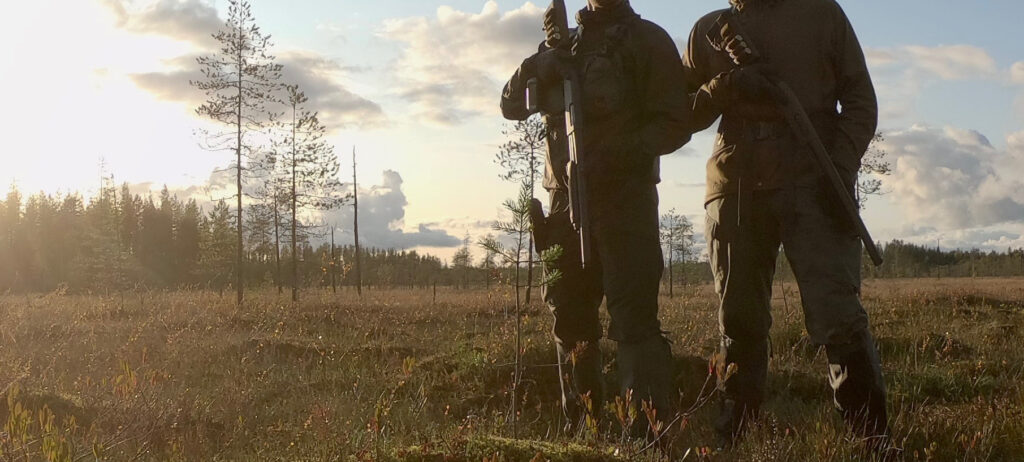
Rethinking the concept
While there has been some progress made with general purpose rifles, there has been very little of that with the shotgun. Is the traditional concept perfect? Could we divert from the traditional setup without degrading it’s good qualities, or by degrading them less in relation to what is gained. Could we still preserve the ability to effectively hunt with the gun? As an added bonus the resulting shotgun could be a more general purpose firearm you could hunt small and large game with, shoot some clays at the range and maybe even take it to the occasional 3-gun match.
On the military and law enforcement weapon systems we have seen the move toward more compact systems. The driver for the change in addition to the easier handling has been the development made by the cartridge industry.
That same concept could make sense for hunting use as well. Especially when hunting in thick foliage like a forest or when the hunt requires the hunter to cover a lot of ground in difficult terrain.
One would think the advantages of a handier tool would be unquestionable, but what about the down sides? Does the accuracy or terminal ballistics get worse in the process of making the gun handier?
That’s what we’re trying to find out.
Methods of hunting
For a hunter who hunts mainly from a blind or shooting upland birds on a plain field there is really no need to change anything on the shotgun. Same goes for a hunter who only moves short distances from a motor vehicle to a shooting blind and back. Black grouse hunting in the thick woods or stalking rabbits and other small game in uneven terrain or in deep snow are forms of hunting that might benefit from a more handy tool for the job.
There is also a growing number of people who combine hunting with other activities. Someone who does hiking, photography, bike packing or something similar in conjunction with hunting is surely going to appreciate a shorter gun and a smarter carry system. Carrying a long hunting shotgun does not necessarily enable one to combine different activities or have fun doing it.
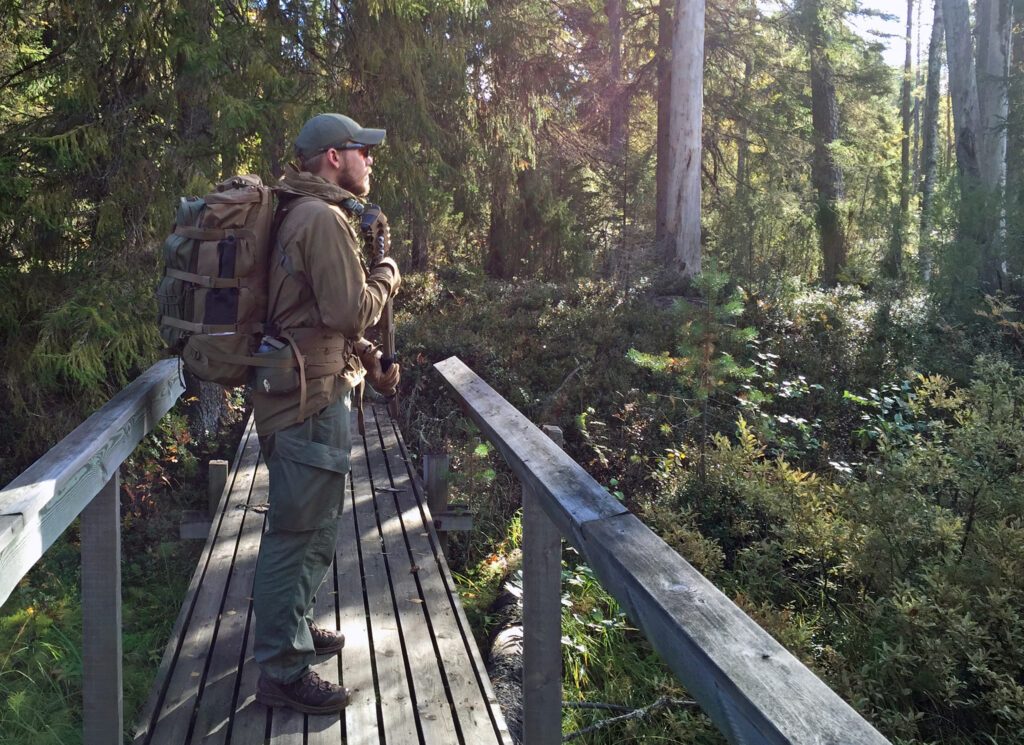
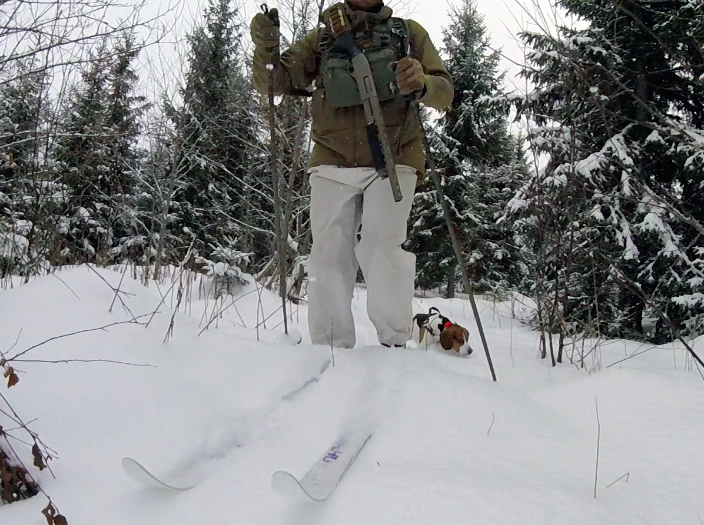
What to change?
The Stock
The stocks on most of the shotguns on the market are too long. You can do just fine with a long stock if the type of hunting you do allows you to get the same shooting stance you get on the clay range and wear similar clothing. However if you’re on a mobile hunt, you are frequently surprised by a fleeing game animal mid-stride. Often far from an optimal range shooting stance. This is where the shorter stock comes in handy. The same issue arises when we are wearing heavier winter clothing or carrying a backpack.
As a material the synthetics are more durable, weigh less and are easier to maintain than wood. For example the event of a slip and fall on an icy surface while landing on your shotgun would more than likely break a wood stock, when a synthetic one would be just fine.
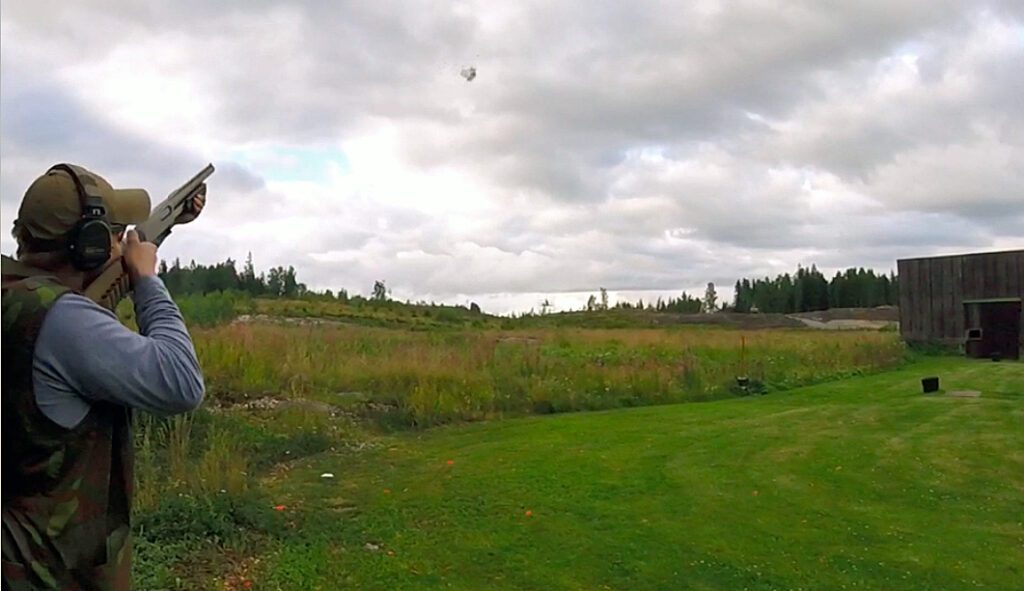
The Barrel
There is no denying the longer barrels are easier to wing shoot than the shorter ones. By shortening the barrel you increase the comfort of handling and carrying the gun. Jeff Cooper called this quality ”handiness” in describing his Scout Rifle concept. We are talking about a hunting gun, so how large percentage of its use while hunting is being carried versus how much it’s shot?
The Sling
The traditional sling for a shotgun is just a carrying strap that attaches via fixed loops to the underside of the buttstock on the rear and under the barrels in the front. This kind of sling is really only meant to help you carry the shotgun on one shoulder and you have to hold on to the sling or the gun with your hand to prevent the sling from falling off the shoulder or to prevent the gun from going horizontal. Some old school shotgunners don’t want to see slings on shotguns at all. There is some merit to this, since you’re more likely to be ready for the shot with the gun in your hands. The problem with it is the moment you need your hands free to do something.
While the author is not a huge proponent of military equipment to be used in hunting, it is a fact that the military industrial complex is driving the innovation in the field of firearms and accessory development. One fruit of this labor is the adjustable two point sling pioneered by Viking Tactics with their VTAC-sling and Blue Force Gear with their VCAS-sling. Since the introduction of these slings there have been numerous companies bringing variations of them available to consumers.
These modern slings are attached to the sides of the weapon usually with quick detachable socket- or hook-type loops. This type of sling allows you to carry the gun across your upper body with the barrel pointing up or down in a 45 degree angle. The slings have a mechanism to allow you to loosen or tighten the gun on you. In the loosest position you can shoot freely from any position and in the tightest you can have the gun snugly against your body to free up your hands to do other things.
The Sights
The sighting system of a shotgun is typically a vent rib barrel with some kind of a bead at the muzzle. We’ve been told by a lot more knowledgeable shotgunners that shotguns are aimed with the buttstock. So you are supposed to be focused on the moving target with your eyes and the well fitting stock of the gun will make sure you are pointing the muzzle in the correct position the shot breaks. It’s a pretty hard concept to learn especially if you have been shooting more with rifles and pistols. The idea of not knowing where you missed is frustrating. Could a red dot sight make any difference? At least for use on big game with slugs the optical sight would make a world of difference.
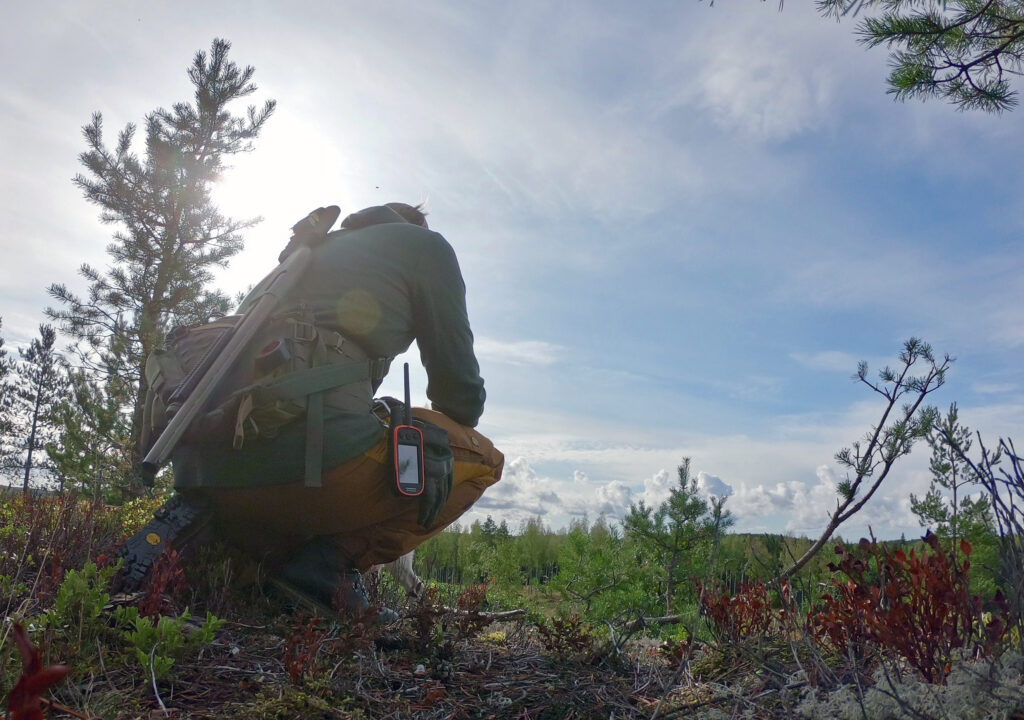
The Disadvantages
When you shorten a barrel of any firearm, there is usually some muzzle velocity lost in the process compared to a longer barrel. How much is lost and can it be affected with ammo selection? Does the amount the barrel is shortened make a difference? On rifles the shortening of the barrel has a more linear effect on the muzzle velocity, since rifle cartridges use slower burning powders. The noise and pressure levels have a tendency to increase near the muzzle on shorter barreled firearms. With shorter barrels it’s harder to shoot moving targets, since the mass of the longer barrels isn’t there to help the shooter to maintain momentum of the barrels when following a moving target.
Then there is the ”hate factor”. The short guns look different that the classic hunting shotguns do and that brings up all kinds of weird reactions when interacting with more traditionally minded individuals. Sometimes it’s the guy on a clay range that comes raging at you that it’s forbidden to shoot with that kind of ”bank robber gun” and sometimes it’s the instructor of a shotgun shooting school that refuses to teach you, because you have a ”too short gun” that ”you can’t do s**t with”. Most of the time it turns into curiosity after they see the shooter acting politely, exhibiting safe gun handling and hitting some targets with the strange looking boomstick.
Whether or not the concept makes sense or not is up to the hunter to decide. There are a lot of questions in this article. To some of them we have answers and to some we are still looking for them. In this first article we cover the concept. In the following articles we’ll present some results and answers.
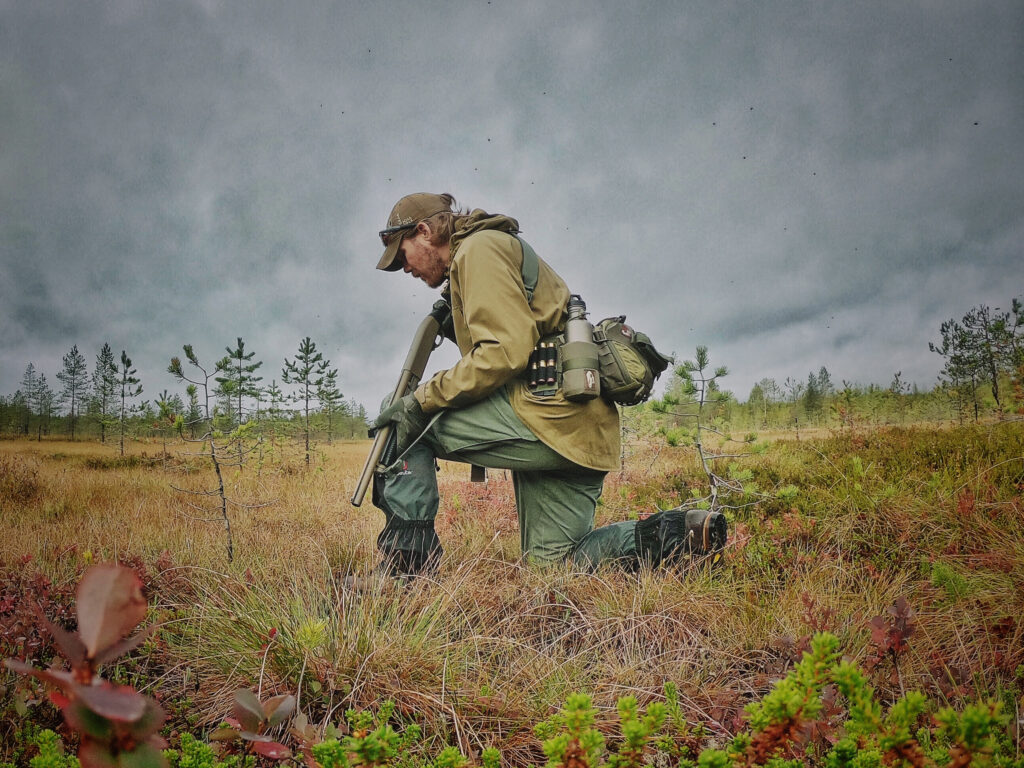
Thank you for reading this far. If you liked this content, please consider following us on social media and stay tuned for more.